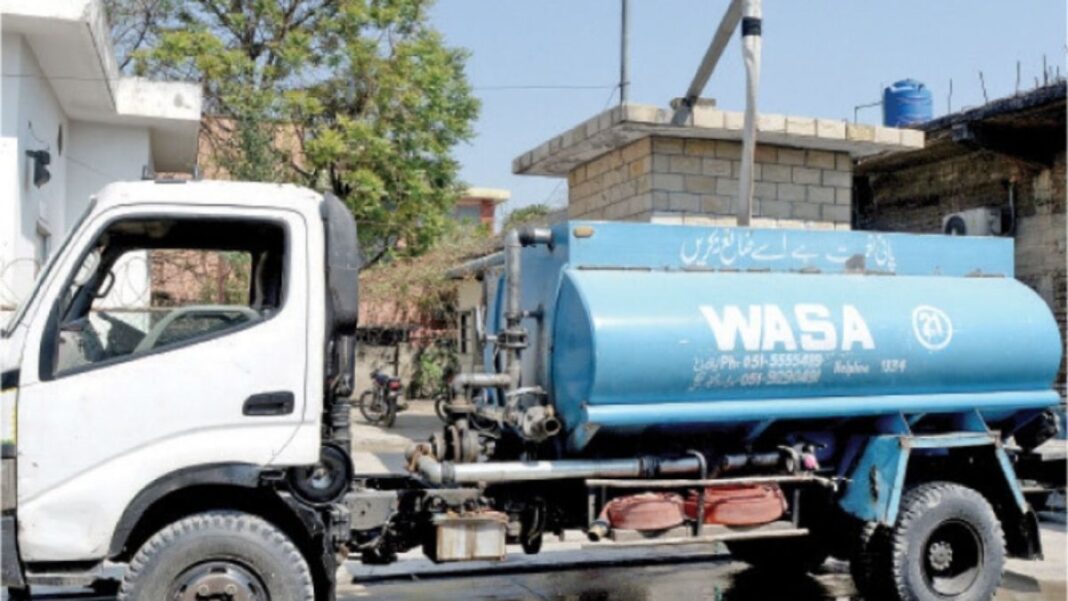The Water and Sewerage Agency (Wasa) Rawalpindi’s recent announcement of a staggering increase in water and sewerage tariffs has sent shockwaves through the community. The agency’s decision to implement an exorbitant rise of 300 to 1500 percent in charges, effective from July 01, has led to widespread outrage and criticism from consumers.
Initially, the agency had compiled bills for the month of July, which were made available online. However, the bills have yet to be delivered to consumers, likely due to anticipated backlash. Normally, Wasa’s revenue wing delivers bills to consumers by the 5th of every month.
Relevant Read: Social Media Influence Linked to Increase in Divorce and Family Disputes in Rawalpindi
Attempting to justify the drastic increase in charges, a Wasa official cited a revision in rates that had not been updated since 2009. However, consumers are up in arms, particularly over the scale of the increase for both water and sewerage services. The updated rate list indicates that commercial consumers could see their bills soar by over 1500 percent, while residential consumers face inflated bills ranging from 300 to 600 percent.
Residents living in houses of category C locations up to four Marlas are not exempt from the tariff increase. Bills available online have revealed charges surpassing even the government-approved hike.
For instance, the water and sewerage charges for residents with houses up to four marlas have risen from Rs 148 per month to Rs 500 per month, a staggering increase of around 350 percent. This includes water bills increasing from Rs 98 to Rs 290 and sewerage charges from Rs 40 to Rs 210 per month.
The increase is equally drastic for other property sizes. Consumers residing in seven Marla houses now face a total monthly charge jump from Rs 226 to Rs 1302, representing an increase of over 550 percent. These charges encompass a water bill increase from Rs 134 to Rs 672 and a sewerage charge increase from Rs 92 to Rs 630.
In addition, the residents of houses ranging from over seven marla to 10 marlas could witness their total charges surge from Rs 394 to Rs 2008, marking an increase of over Rs 1650 (approximately 450 percent). These costs encompass an increase in water charges from Rs 264 to Rs 1160 and sewerage charges from Rs 130 to Rs 841 per month.
The criticism doesn’t end here. Those residing in houses from 11 to 15 marlas will now be confronted with Wasa bills of Rs 2500 instead of Rs 525, reflecting a nearly 480 percent increase. This includes water charges leaping from Rs 350 to Rs 1450 and a sewerage bill increase from Rs 175 to Rs 1050.
Owners of houses ranging from over 15 to 20 marlas would pay Rs 3780 instead of Rs 900, marking a 550 percent increase. This incorporates water charges rising from Rs 600 to Rs 2120 and sewerage charges increasing from Rs 300 to Rs 1660.
Residents of houses up to 25 marlas are also hit, facing enhanced charges of Rs 5000 instead of Rs 1595 per month, marking an increase of over 300 percent. Water and sewerage charges for consumers in this category surge from Rs 1063 and Rs 532 to Rs 2900 and Rs 2100, respectively.
Even more concerning, charges for under-construction houses up to 20 marlas surge by a shocking 1500 percent, from Rs 2250 to Rs 30,000. Other businesses are not spared either; ice factories, petrol pumps with service stations, bakeries, sweet shops, fast food outlets, and barber shops are all set to endure substantial financial burdens.
Despite these drastic rate hikes, Wasa’s ability to upgrade its sewerage system and address the growing population of Rawalpindi remains in question. Aging sewerage lines dating back to 1982 or earlier, coupled with frequent manhole overflows, highlight the agency’s infrastructural challenges.
Furthermore, during the summer months, the agency struggles to meet the escalating demand for water. Owners of under-construction houses now facing a 1500 percent increase in charges have no choice but to rely on water tankers to meet their water needs.
As the community grapples with these astronomical tariff hikes, questions remain regarding the justification behind such an increase and whether consumers’ concerns will be addressed by Wasa in the near future.

















